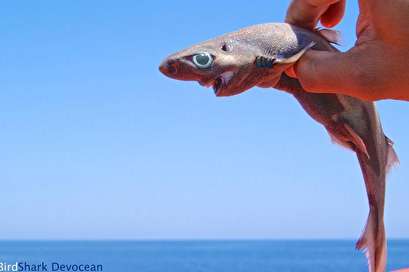TEHRAN, Mar 06 -"It likely has a very small distribution only around the seamounts northwest of the Hawaiian Islands," researcher Bradley Wetherbee said.
 TEHRAN, Young Journalists Club (YJC) -After 30 years of research, scientists have finally given an unusual lantern shark its own species designation and a new name -- a family name.
TEHRAN, Young Journalists Club (YJC) -After 30 years of research, scientists have finally given an unusual lantern shark its own species designation and a new name -- a family name.
University of Rhode Island shark researcher Bradley Wetherbee named the deep sea species Laila's lantern shark after his 17-year-old daughter, Laila Mostello-Wetherbee. The newly named species' scientific name is Etmopterus lailae.
Wetherbee has known the lantern shark for nearly twice as long as he's known his daughter. But while his daughter arrived with a name, it took Etmopterus lailae three decades to earn its designation.
"It's not uncommon for it to take many years for a new species to be recognized as new to science and then properly described and named," Wetherbee, a professor in the department of biological sciences, said in a news release. "This one just took a little longer than usual."
The first Etmopterus lailae specimens Wetherbee ever saw were frozen. In the 1990s, scientists with the National Marine Fisheries Service gifted Wetherbee -- then a doctoral researcher at the University of Hawaii -- a box of frozen sharks.
Wetherbee began sorting the specimens a year later. He determined the box comprised two different groups, smooth lantern sharks and rough lantern sharks.
The following year, a broken freezer caused most of the specimens to thaw and ruin. Just 15 sharks were salvaged. However, Wetherbee and his research partners had recorded enough observations -- having precisely measured the anatomy of each and every specimen -- to compose a paper describing the poorly understood species.
But before completing the research, Wetherbee had a lantern shark expert, David Ebert of the Moss Landing Marine Laboratory, examine the remaining specimens. It took Ebert five years, but he determined the specimens comprised neither smooth lantern sharks nor rough lantern sharks.
After a few more years of analysis, Wetherbee and Ebert rewrote the research paper, naming the shark as an entirely new species. Their work was published in the journal Zootaxa.
"Since the sharks were essentially mine to begin with, Dave and the others involved agreed to let me name it after my daughter," Wetherbee said.
Wetherbee believes the only Laila's lantern shark specimens ever observed are those first sharks that arrived frozen in a box.
"It likely has a very small distribution only around the seamounts northwest of the Hawaiian Islands. That's the nature of lantern sharks. There are different species in different areas, and they tend to be isolated," he said. "If you went to that spot and fished for them, you'd probably catch them. But it's so remote, there's not much of a reason for anyone to go there."
The new species designation means the lantern shark family, or Etmopteridae family, comprise 46 species, spread across five genera. All the small sharks are spread among the deep sea ecosystems of the Atlantic, Indian and Pacific Oceans. Many lantern sharks are bioluminescent and most feed on krill and small bony fish.
Source: upi
 TEHRAN,
TEHRAN,